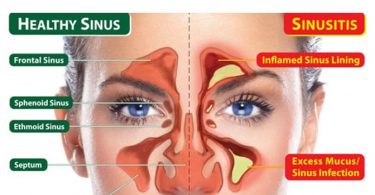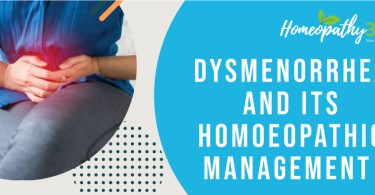 Introduction
Introduction
Our spine is a column of bones (vertebrae) held together by muscles, tendons and ligaments and cushioned by shock-absorbing disks. A problem in any part of our spine can cause back pain. For some people, back pain is simply an annoyance. For others, it can be excruciating and disabling.
Most back pain — even severe back pain — goes away on its own in four to six weeks. Surgery is rarely needed for back pain and is generally considered only as a last resort.
Back pain is one of the most common reasons people go to the doctor or miss work and a leading cause of disability worldwide. Most people have back pain at least once.
Causes
Back pain can come on suddenly and last less than six weeks (acute), which may be caused by a fall or heavy lifting. Back pain that lasts more than three months (chronic) is less common than acute pain.
Back pain often develops without a specific cause that a doctor can identify with a test or imaging study. Conditions commonly linked to back pain include:
- Muscle or ligament strain.
Repeated heavy lifting or a sudden awkward movement may strain back muscles and spinal ligaments. If a person is in poor physical condition, constant strain on his back may cause painful muscle spasms.
- Bulging or ruptured disks.
Disks act as cushions between the bones (vertebrae) in our spine. The soft material inside a disk can bulge or rupture and press on a nerve. However a person can have a bulging or ruptured disk without back pain. Disk disease is often found incidentally when a man undergoes spine X-rays for some other reason.
Osteoarthritis can affect the lower back. In some cases arthritis in the spine can lead to a narrowing of the space around the spinal cord, a condition called spinal stenosis.
- Skeletal irregularities.
Back pain can occur if the spine curves abnormally. Scoliosis, a condition in which the spine curves to the side, also may lead to back pain, but generally only if the scoliosis is severe.
The spine’s vertebrae can develop compression fractures if the bones become porous and brittle.
Symptoms
Signs and symptoms of back pain may include:
- Muscle ache
- Shooting or stabbing pain
- Pain that radiates down your leg
- Limited flexibility or range of motion of the back
Risk factors
Anyone can develop back pain, even children and teens. Research has yet to prove what contributes to back pain. However, these factors might put you at greater risk of developing back pain:
- Back pain is more common as a person gets older, starting around age 30 or 40.
- Lack of exercise.Weak, unused muscles in the back might lead to back pain.
- Excess weight.Carrying too much weight puts extra stress on the back.
- Some types of arthritis and cancer can contribute to back pain.
- Improper lifting.Using the back instead of legs can lead to back pain.
- Psychological conditions.People prone to depression and anxiety appear to have a greater risk of back pain.
- This can keep the body from delivering enough nutrients to the disks in the back.
Prevention
Back pain may be avoided and its recurrence may be prevented by improving our physical condition and learning and practicing proper body mechanics.
To keep the back healthy and strong:
- Regular low-impact aerobic activities — those that don’t strain or jolt the back — can increase strength and endurance in our back and allow our muscles to function better. Walking and swimming are good choices.
- Build muscle strength and flexibility.Abdominal and back muscle exercises (core-strengthening exercises) help condition these muscles so that they work together like a natural corset for our back. Flexibility in our hips and upper legs aligns our pelvic bones to improve how our back feels.
- Maintain a healthy weight.Being overweight strains back muscles. If a person is overweight, trimming down can prevent back pain.
Use proper body mechanics:
- Stand smart.Maintain a neutral pelvic position. If a person must stand for long periods, he should place one foot on a low footstool to take some of the load off his lower back. Alternate feet. Good posture can reduce the stress on back muscles.
- Sit smart. We shouldchoose a seat with good lower back support, armrests and a swivel base. Consider placing a pillow or rolled towel in the small of the back to maintain its normal curve. Keep the knees and hips level. Changing of position frequently, at least every half-hour.
- Lift smart. Heavy lifting should be avoided, if possible, but if we must lift something heavy, let the legs do the work. Our back should be straight — no twisting — and bend only at the knees. The load should be holded close to our body.
INVESTIGATIONS:
The most common diagnostic tests include:
- X-ray. This test provides information on the bones in the spine. An x-ray is often used to check for spinal instability (such as spondylolisthesis), tumors and fractures.
- CT scan. This test is a very detailed x-ray that includes cross section images. CT scans provide details about the bones in the spine. They may also be used to check for specific conditions, such as a herniated disc or spinal stenosis. CT scans tend to be less accurate for spinal disorders than MRI scans.
- MRI scan. An MRI scan is particularly useful to assess certain conditions by providing detail of the intervertebral disc and nerve roots (which may be irritated or pinched). MRI scans are useful to rule out spinal infections or tumors.
Homeopathic Treatment of Back Pain
Homeopathy is known to effect magical recovery in back pain cases whether resulting from disc complaint, arthritis, injuries or muscle strain. It offers a wide range of highly effective Homeopathic medicines prescribed after detailed analysis and evaluation of symptoms. Homeopathic medicines are natural and therefore, safe for consumption by all age groups. There are several homoeopathic medicines indicated in back pain according to the cause and situation of a person. Some of them are discussed below with their indications:
Homeopathic Medicines for Back Pain
Ø Rhus Tox
Rhus tox is a top grade Homeopathic medicine for treating back pain. Some characteristic symptoms indicating its use are – the back pain arises from muscle strain due to overstraining or over stretching or from lifting heavy weight, it worsens with rest while the person feels relief from walking or motion. Also, in cases where the back pain gets better with hard pressure, Rhus tox is the appropriate choice of medicine.
Ø Bryonia Alba
Bryonia alba is another majorly indicated homeopathic medicine for treating back pain. A prominent symptom that decides in favour of Bryonia alba as the best medicine is that the back pain gets worse with motion. Walking also worsens the back pain. Rest brings relief. Bryonia alba is also the most suitable Homeopathic medicine for treating back pain that becomes more severe with stooping and standing.
Ø Aesculus Hippocastanum
Aesculus hippocastanum is a major homeopathic medicine for back pain affecting the sacrum region. The pain may extend to the hip along with sacrum back. Walking and stooping increase the pain. For some persons needing Aesculus hippocastanum, rising from a sitting position is a challenge. Intense stiffness is observed in the sacrum and hip region along with the pain.
Ø Kali Carb.
For back pain in women after childbirth, Kali carb is considered a most wonderful homeopathic medicine. The pain may get worse on walking and there is a need to stop and take rest before starting to walk again. There is a desire to lie down for relief from back pain. Stiffness or excessive weakness in the back may also attend the pain. Kali carb is also useful for back pain in women during menses or after miscarriage.
Cimicifuga Racemosa and Guaiacum Officinale- for cervical back pain
The most effective Homeopathic medicines for treating cervical back pain are Cimicifuga racemosa and Guaiacum officinale. The symptoms to look out for while prescribing Cimicifuga racemosa are – pain, sensitivity in neck, worsening of pain from pressure. The symptoms for use of Guaiacum officinale are – stiffness in the cervical back and shoulders, aching pain in the neck.
Arnica montana and Hypericum perforatum –for back pain from injury
For treating back pain arising from injury, Homeopathic medicines Arnica Montana and Hypericum Perforatum are rated among the best treatment option. Back pain arising from falls, blows – of both recent and remote origin – responds wonderfully well to these medicines. Persons needing Arnica Montana have sore, bruised pain in the back as after being beaten. This may be attended with lameness in the back. The symptoms for use of Hypericum Perforatum are – pain in the back with extreme sensitivity which makes it impossible to walk or stoop. Hypericum Perforatum is most significant medicine for coccyx pain (coccydynia) arising from a fall over the coccyx.
Cobaltum and Phosphorus – for back pain from sitting
Cobaltum is used where pain in the back is worse in the sitting position. The pain usually radiates from the lower back down the legs and feet. Weakness in the legs may be felt. Walking may relive the back pain. Phosphorus is indicated where prolonged sitting leads to back pain. Weakness in the back may also be felt. Burning sensation in the spine is another feature that may attend.
Colocynthis and Magnesium Phosphorica – for lower back pain radiating down lower limbs
Colocynthis and Magnesium phosphorica are very effective Homeopathic medicines for back pain radiating down the legs. Among them, Colocynthis is helpful for back pain radiating down the limbs on the left side. The person needing Colocynthis may get relief from pressure. The pain can be tearing or drawing in nature. Magnesium phosphorica is indicated for lower back pain that radiates down the right lower limb. The pain can vary from sharp, shooting, lightning-like or cramping in nature. Warm applications may offer some relief from pain.
Kalmia Latifolia and Paris Quadrifolia – for cervical back pain radiating down the arm/ hands
Kalmia Latifolia and Paris quadrifolia are top grade Homeopathic medicines for cervical back pain radiating down the arms or hands. The radiating pain is accompanied by weakness, tingling, numbness in the arm or hands where homeopathic medicine Kalmia latifolia will work best. Symptoms guiding use of Paris quadrifolia are sensation of weight in the neck, worsening of symptoms from exertion (either mental/physical) and numbness in fingers.
CONCLUSION:
In my clinical experience as a homoeopathic physician for last 8 years and as a homoeopathic medical officer in R.B.T.S Govt. Homoeopathic Medical College & Hospital, Muzaffarpur for last 3 years, I have gone through a number of cases of patients suffering from back pain for different a etiology and symptoms which had been successfully treated by homoeopathic medicines. Homoeopathic medicines have a wide scope and efficacy in such cases. If a patient is treated properly by homoeopathic medicines and advised proper management like maintaining posture and physiotherapy, there is maximum possibility of recovery with immediate relief of pain.
Bibliography
- www.mymosaiclifecare.org/health-library/symptoms/b/back-pain-symptom/
- www.drhomeo.com/back-pain/10-best-homeopathic-medicines-for-back-pain/
- www.drhomeo.com/cervical-spondylosis/cervical-spondylosis-its-homeopathic-treatment/





